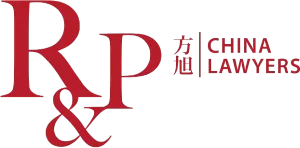China's patent owners have two legal remedies to tackle infringements: the civil lawsuit or the administrative action. However, since administrative departments lost the authority to decide on compensation for damages of infringement under the amended PRC Patent Law of 2001, the number of administrative actions has gradually decreased.
This may be about to change. Administrative actions are simple, fast and relatively cheap, and can be a useful stepping stone for civil claims. With the recent amendment of the Patent Administrative Enforcement Rules, the State Intellectual Property Office is refocusing attention on the role of administrative authorities in combating intellectual property infringements.
Administrative Enforcement in Patent Disputes
Where compensation is not of an immediate concern in a patent dispute, a complaint with the local Intellectual Property Office (IPO) can be an efficient and effective approach to tackle a patent infringement. Preliminary evidence is often sufficient to convince the IPO to open an investigation, and the deadlines for handling and dealing with claims (see below) ensure a swift resolution of the case. While compensation cannot be obtained directly from an administrative action, it will serve to put considerable pressure on an infringer to cease infringements, at a relatively low cost. Preparing submissions, liaising with the IPO and attending hearing(s) still takes time and efforts, but generally much less than is needed to prepare for and engaging in patent civil litigation.
Moreover, an administrative procedure can help to overcome arguably the two biggest challenges to a successful civil lawsuit: proving the infringement and collecting sufficient evidence to support a claim for compensation. Administrative actions and civil lawsuits cannot be conducted simultaneously: the IPO will terminate the case immediately once a civil claim is filed concerning the same suspected infringements. However, patent holders can choose to first instigate an administrative action, and upon receiving a successful decision, pursue the infringer for compensation in a civil lawsuit.
In China's civil court system, the claimant should provide evidence to prove the infringement and consequential damages, but Chinese courts do have the authority and means to preserve evidence. Practice shows, however, that it is not so easy to persuade courts to do so. In any case the claimant will be asked to point the court to this evidence, and will likely be asked to deposit a substantial guarantee to cover potential damages if the preservation is later proven unjust.
vIn an administrative action however, the IPO will much more readily acquiesce to a patent holder's request to conduct an on-site investigation and collect evidence, based on preliminary evidence only and without the need to provide monetary guarantees. The Patent Administrative Enforcement Rules specifically give the IPO the authority to investigate infringements and collect evidence, though with one caveat: the IPO has not (yet) received the tools to compulsory enforce its will. This means that a suspected infringer can refuse a request from the IPO, though in practice many Chinese companies will be sufficiently pressured to cooperate with an investigation. Any evidence that the IPO can collect, including samples of infringing products and a record on the number of infringing products, can be used in a civil action after the administrative case has been completed or cancelled.
Procedures for Administrative Enforcement of Patent Rights
The Patent Administrative Enforcement Rules, adopted by the State Intellectual Property Office on 29 December 2010 and in force as of 1 February 2011, provide further clarity and detail on the procedures that the IPO follows when receiving complaints from a patent holder or an interested party, such as the licensee under a recorded patent licensing contract. We list the most important provisions:
- Materials to Apply for Administrative Enforcement
- Evidence of the applicant's identity, such as the individual's ID card or the company's business license and proof of identity for its legal representative. Although the Rules are not specific on this point, most IPO's require the materials of a foreign company applicant to be notarized abroad and legalized by the local Chinese embassy.
- Evidence of patent validity, such as an extract form the Patent Registry (issued by the SIPO with all information of the patent) or the original patent certificate, and a receipt for the payment of the patent annual fee.
- Application, which includes (i) relevant information on the applicant and its agents, and the suspected infringer; (2) the claim; (3) relevant facts and arguments. The request shall be signed or sealed by the applicant.
- Where the patent infringement involves a utility model patent or design patent, the IPO may require an evaluation report of the patent made by the State Intellectual Property Office.
- Enforcement Procedures & Deadlines
- Filing: the IPO will decide within 5 working days upon receipt of the application whether or not to accept the case.
- Delivery: the IPO will deliver the application and other materials submitted by the applicant to the accused infringer within 5 working days from acceptance of the case.
- Response: the accused infringer must submit a response within 15 days from receiving the delivered materials. The IPO will forward this reply to the applicant within 5 working days. If no response is received from the accused infringer, the case will proceed.
- Oral hearing: the IPO may decide, on a case by case basis, to organize an oral hearing, in which case it shall notify the parties on the time and place of such hearing at least 3 working days in advance. If the applicant fails to participate without justified reason, the case will be dismissed. If the respondent fails to participate, a decision will be made in its absence.
- Completion: a patent infringement dispute should be closed within 4 months as of the date of filing; particularly complex cases can be extended by 1 month, excluding the time for notice processing, appraisal of the infringing product, or suspension of the action (e.g. when awaiting a decision on the patent invalidity case).
- Investigation and Evidence Collection
- The IPO may decide whether or not to investigate and collect relevant evidence at the request of the parties, but may also investigate and collect evidence ex officio.
- When investigating and collecting evidence, the IPO may consult and copy contracts, accounting books and other relevant documents related to the case; interrogate the parties and witnesses; use measurements, photographs, video, etc. during on-site inspection. If the IPO suspects the infringement of a process patents, it may require the party under investigation to conduct a live demonstration.
- The IPO may collect evidence of infringing samples adopting a sampling forensics methodology. For product patents, it may extract part of an infringing product as sample; for process patents, it may extract part of the product directly obtained using the method as a sample. The number of samples taken should be limited to that necessary to prove the facts.
- Measures to Stop the Infringement
- Manufacture: Where the infringer manufactures product infringing a patent, the IPO can order it to immediately stop the manufacturing, destroy the equipment and moulds used for the infringement, and refrain from selling or use unsold products or put infringing products on the market in any other form.
- Use: Where the infringer uses a patented process, the IPO can order it to immediately stop using the process, destroy any special equipment and the moulds used for implementing the process, and refrain from selling or using unsold products directly obtained from the process or put such products on the market in any other form.
- Sale: Where the infringer sells infringing products or products directly obtained from a patented process, the IPO may order it to immediately stop selling the product, and refrain from using the unsold infringing products, or to put such products on the market in any other form.
- Offer of sale: Where the infringer offers to sell infringing product or products directly obtained from patented process, the IPO may order it to immediately stop offering to sell the products, eliminate the effects, and refrain from engaging in any further sales activities.
- Import: Where the infringer imports infringing products or products directly obtained from a patented process, the IPO may order it to immediately stop such action. If the infringing products have already passé through Customs, it shall not sell, use the infringing products or put them on market in any other form. If the infringing products are still under control of Customs, the decision shall be reported to the Customs for their further handling.
- Implementation of Decision
- When the IPO confirms the patent infringement and issues an injunction, if the infringer appeals the decision to a People's Court, the implementation of the IPO's decision will not be suspended during the appeal proceedings.
- If the infringer neither files an appeal nor ceases its infringement, the IPO may apply to the court for mandatory enforcement of the administrative decision.
The content of this article is intended to provide a general guide to the subject matter. Specialist advice should be sought about your specific circumstances.


